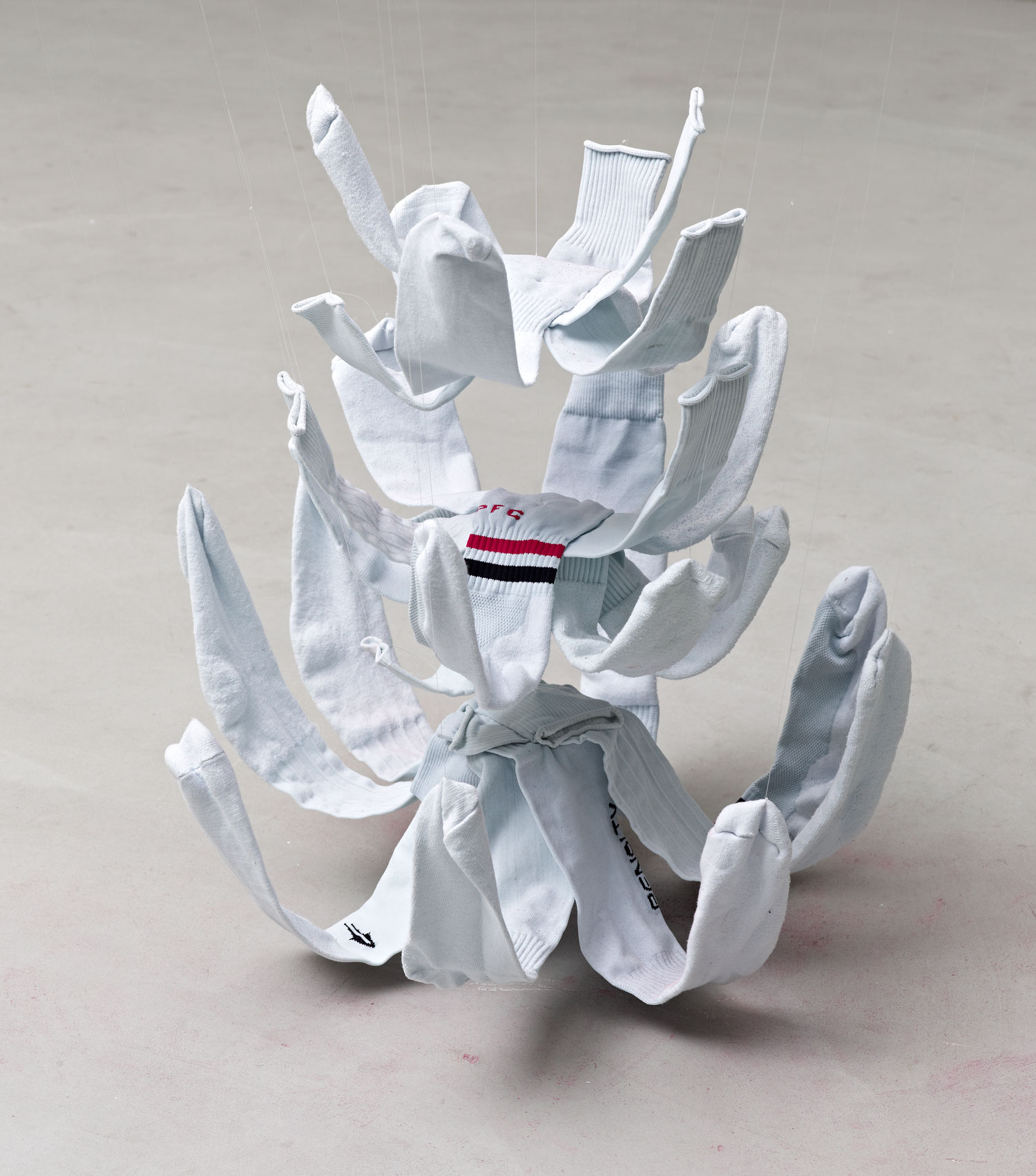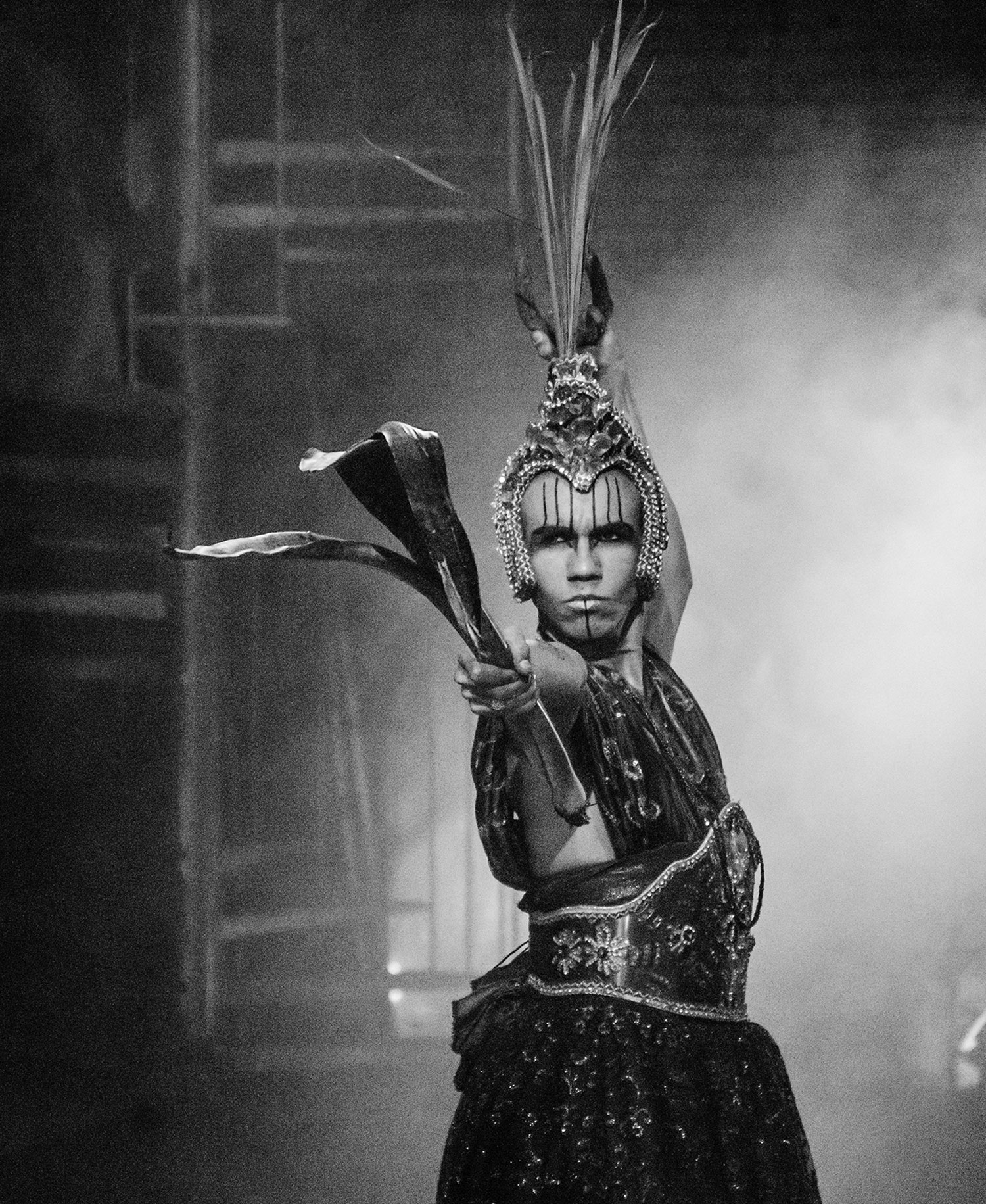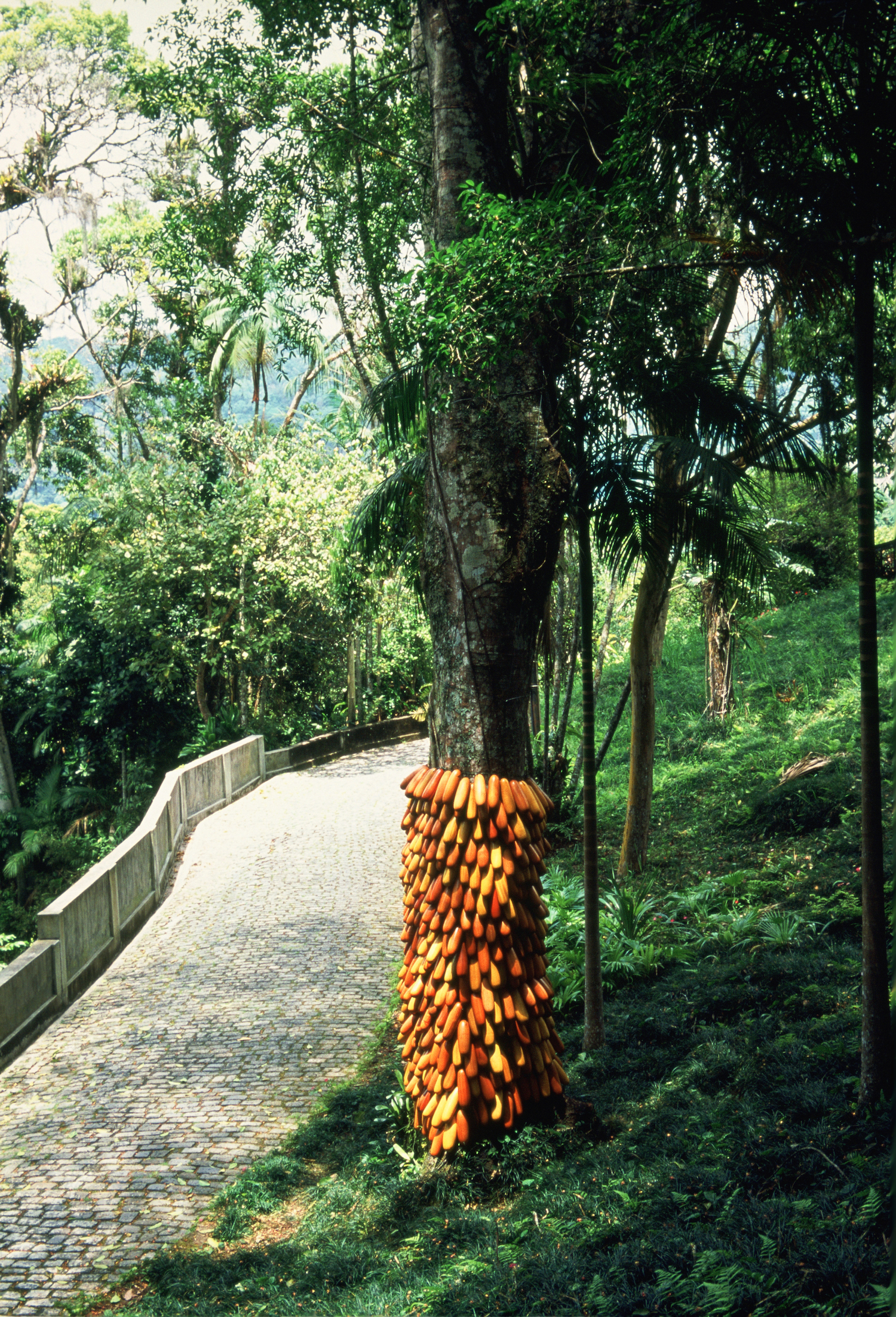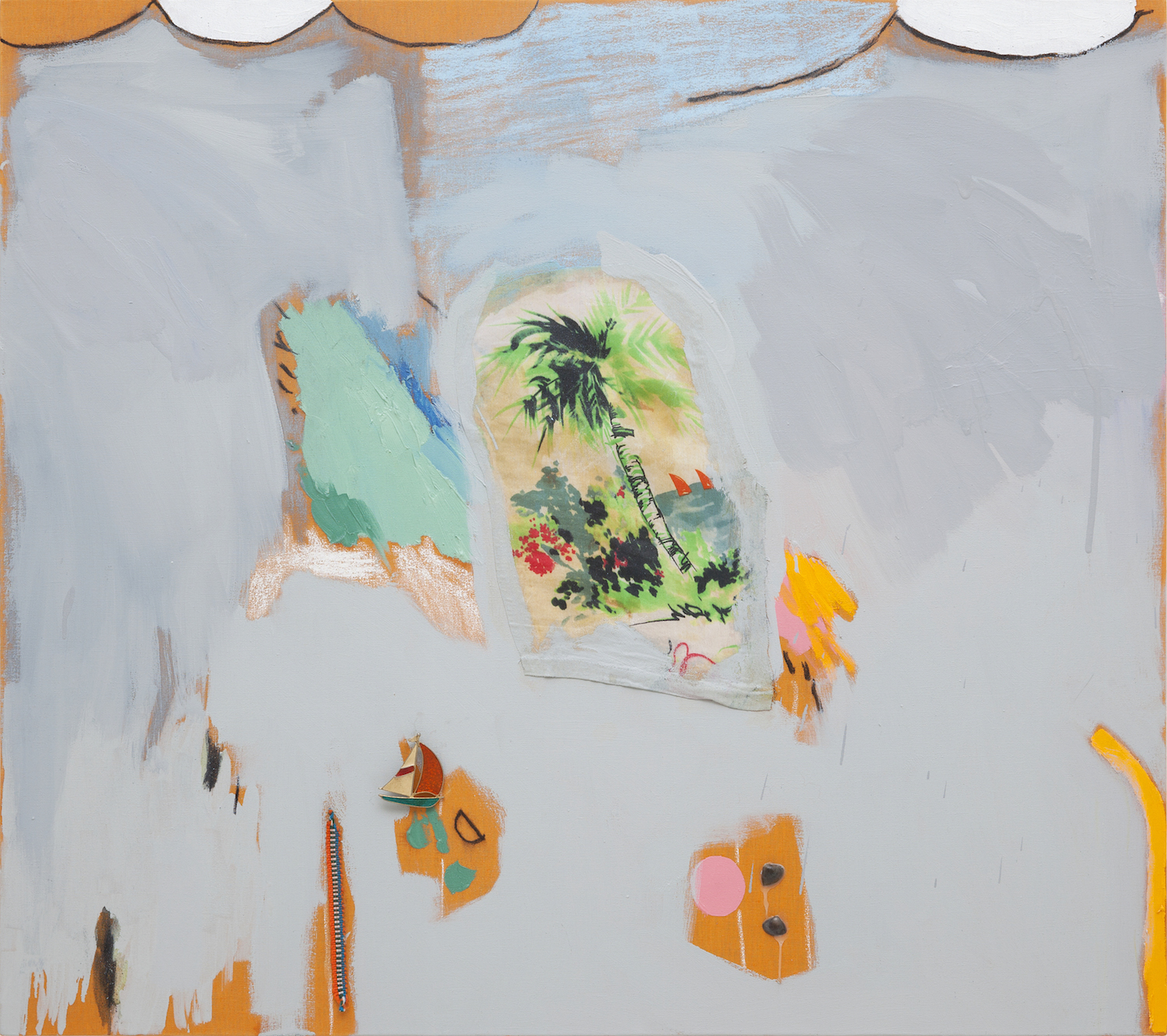Adriano Amaral’s delicate installations are grounded in the interpolation of layers, elements and moments of both experience and representation. Matter, gesture and image are rendered as intimate categories to be purposed in personal ways, and distinct procedures of “making” are shuffled together in order to prompt different courses for association. In his exploration, Amaral routinely addresses the human will to reconfigure and seems to voice that it is the relationship that we construct toward materials and our conception of forms that defines our perception and shapes our language.
Amaral creates compounds of materials — such as fabrics, cement, powdered metals, chlorine and peat — that are woven together and assembled to produce a formal play of asymmetrical elements, both harmonious and discordant among each other. Foremost, these procedures require a humanized use of time that unfolds at the pace of the correspondence between the artist and the physical and chemical reactions of the materials he combines. The remainder is enabled into an immediately legible manner — forms are made definite, often capable of being repeated, and allude to prime objects of our daily lives. In a very recent series, delicate wire structures anchored to the floor prop up pieces of fabric into simple configurations that seem at the same time to outdo and to give in to their materiality, and as is recurrent in many of his sculptural objects, their fragile constitution seems to solicit both our cognitive and psychological attention. An attentive eye is equally useful in noticing the often very subtle site-specific works that orbit his sculptures. These are spatial interventions that are carefully executed within proximity of or impinging upon the perimeter of a given space. Insertions, displacements and fractures become representational gestures executed against windows, flooring and walls, speculating with the animation that entropy bestows upon the inanimate.
The title of his solo exhibition “Never From Concentrate” — on view from mid January at Galeria Múrias Centeno in Porto — is borrowed from the disclaimer we find on juice cartons and may be considered a commentary on how objectified language is related to the processes of commodity exchange — wherein experience is made to support abstract equivalences with real effects in the subject’s relationship to the world. Here we can say that spatial construction in Amaral’s works, the play of common objects in space, alludes to the fixation of perceptual time in the image. There is a constant two-way reference between our bodily reality, our actual experience in real space, and the way we absorb the world by seeing, and by the structuring of seeing given in the image. The question of the object in its “quotidian” setting always refers in different ways to the question of enframing — that is, the question of the image in art as related to the question of the image as the new “natural” environment of our time.

In some of Amaral’s constructions with textiles, textile-like materials and synthetic materials replicating textile qualities, the artist explores the exchanges between the opaque and the translucent effects of light and matter as a type of “narrative” of matter becoming “immaterial” and returning from immateriality to its “primary” nature once again. We can observe here a possibly deliberate link between the artworks of Adriano Amaral and Brazilian author Clarice Lispector’s narratives of objectification and (de-)subjectification coupled with the materialization and dematerialization of objects and beings. In a celebrated short story, O Ovo e a Galinha (The Egg and the Chicken,1964), a common “object” of everyday life is submitted by Lispector to a variety of perceptual frames in which narrative structure and language combine to explore the object’s reality and meaning. It is at the same time a type of concrete object in its “domestic” setting and an abstract entity — one in the other, one becoming the other. At play are categories of language and perception that conflate the unique and the common, the banal and the extraordinary, the singular in the universal and vice versa.
The objects in Adriano Amaral’s installations suffer analogous, and yet less dramatic, transformations, starting with their production or reproduction by the artist as “symbols” or signs related, directly or indirectly, to contexts of daily life but already displaced as artistic elements of a language of images. Briefly stated, they question again and again the relations between perception and image, between lived space and spatial representation in their objective and subjective qualities and they do so by incorporating an underlying temporal layer, the “lived” time of the observer’s engagement with the works.
Time is presented in the artist’s uses of video in two distinct and related ways: either the videos portray the repetition inherent to certain activities or they pattern an action or movement into a continuous loop. In the first case they evoke the pull of ritual repetition; in the second case time is encased in the medium. In this way, video introduces a temporal frame within the sculptures and installations, and time becomes therefore a structural element of the spatial “assemblage”: a time-space structure with sequential, quasi-narrative elements together with the presentification of time and image effects. “Events” in these videos are few; in general, there is no excess in Amaral’s scenarios. It is clear that the nature of the portrayed movement is completely stated in its deployment, whether it is a motorcycle going in circles or a rehearsed human action.
Curiously, for Lispector, repetition and redundancy were both methods of subtractive purification and could propel the written word into a purely spatial and material realm. In this way, speech and writing could be conduced toward direct exchanges with other art forms, in particular the visual arts and its constructive techniques and affects. It is with a corresponding relationship between his own artistic endeavor and neighboring practices that Amaral sets his positions and cues.






